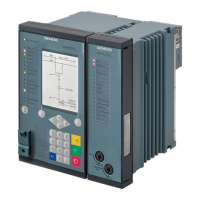Analog input module SM 331; AI 6 x TC Isolated (6ES7331‑7PE10‑0AB0)
A5E02398493-02, 11/2008
19
I&M Identification Data for the Analog Input Module SM 331; AI 6 x TC
Properties
I data: Information about the module that generally appears on the module's housing. I data is only read:
● Hardware release status
● Firmware release status
● Serial number
M data: System-dependent information (e.g. plant designation)
M data is created during configuration.
Identification data (I&M) is information stored retentively in a module that helps you
● Troubleshoot a system
● Check the system configuration
● Locate changes to the hardware of a system
Reading and writing the identification data with STEP 7
System-dependent information is configured in the module's properties dialog.
You obtain information on the module (I data) from the module status dialog. The system-dependent information on the
module is displayed here too.
Note
The I&M data may only be written when the CPU is in STOP mode!
The AI 6 x TC only supports I&M0 and I&M1 data.
User Calibration via SIMATIC PDM for Analog Input Module SM 331; AI 6 x TC
Possibilities
All modules are calibrated before being shipped from the factory, and adhere to the specified accuracy. Generally, it is
therefore not necessary to calibrate the module.
However, for certain systems it may be advisable, and because of standard requirements (e.g. demanded by certain
institutions in the area of food and semi-luxury items or pharmaceuticals) it may even be necessary to recalibrate the
module/s in the system itself; for example, in specified time intervals.
Particularly in systems where encoders record or process very low voltages (for example, in the case of thermo-elements), it
may be advisable that, through a calibration within a system -that is, including all connected lines- a new calibration is
performed. Thus, influences because of lines and/or temperature can be compensated for.
If you recalibrate the module, new calibration values are recorded, and also stored retentively on the module. However, the
calibration values determined prior to shipping the module are not lost as a result of your own calibrations. You can return to
these original calibration values at any time.
Note
Each channel's calibration values are stored specific to the measuring range. That means, they apply to the measuring
range for which the user calibration was performed.
If a channel for which the user calibration values are active is reparameterized into another measuring range, the calibration
values stored by the factory for this channel and this measuring range become active. However, the user calibration values
remain stored. They are overwritten only if the user calibrates the channel again. If, however, the original measuring range is
set for the channel without a new user calibration, the previously determined user calibration values are active again.

